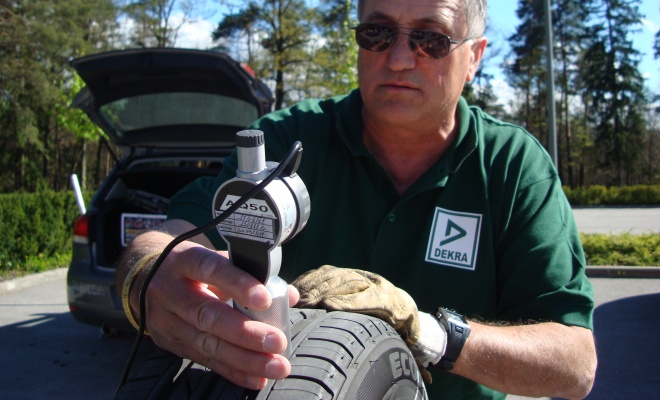
When Renault’s Zoe ZE electric car rolls out onto our roads later this year it will do so on bespoke rubber, its tyres developed specifically for the car by Michelin.
The company’s new Energy E-V tyre has been developed to cater for the peculiar needs of modern electric cars. Compared to their conventional fossil-fuel equivalents, EVs like the Zoe tend to be heavier, with a lower top speed, but with beefier torque from a standstill requiring more straight-line grip. They are also quieter, making road noise more noticeable and intrusive inside the cabin.
And given the limited storage capacity of batteries and their long recharging times, electric cars must also try to make the most of whatever energy they have on board, so very low rolling resistance is a high priority. While an ordinary car will expend around one fifth of its fuel overcoming the drag of the tyres, the tyres of an electric car can account for more than a quarter of power consumption (because the rest of the car is more efficient than an ordinary vehicle).

By employing a softer compound, lighter carcass and an optimised tread pattern, the Energy E-V offers 20 per cent lower rolling resistance than the Energy Saver+, Michelin’s mainstream eco tyre. The company says this equates to a six percent improvement in range per battery charge.
Unsurprisingly, Michelin’s Energy E-V scores top marks under the new European tyre labelling regime, which has been introduced to try to give buyers a means to judge how different tyres might perform. From November this year it will be a legal requirement to display the new performance labels whenever tyres are sold, including during the purchase of new vehicles. The labelling scheme is already under way on a voluntary basis.
The information on the labels comes from standardised tests, and all tyre designs manufactured from July have to be assessed. The scheme awards scores in three areas: grip when braking in the wet, energy efficiency, and drive-by noise. The first two measures are particularly key for a greener vehicle, and each is measured on a scale of A to G (together with green-to-red colour coding in a style similar to the stickers plastered over kitchen appliances like fridges).
With rolling resistance a priority in its design, the Energy E-V naturally scores a top-rated A grade for efficiency, and also a reassuring A for wet braking – thus giving the tyre a coveted “double-A” rating.

It would be natural to suppose that the Energy E-V would therefore make a great choice for any car owner seeking improved miles per gallon, but Michelin cautions against this, emphasising that the tyre is optimised for EVs and is not suitable for conventional cars. Instead it recommends the Energy Saver+, which scores an A for wet grip but only a B for economy.
This surprising advice amply illustrates why the new European tyre labelling system could prove to be a misleading scheme. Buying the right tyre for your car is unfortunately not quite as simple as looking for the best label within your budget, because the label assesses only three out of a basket of different qualities that might all be important when it comes to keeping your car on the road.
Most obviously, the label does not indicate durability – how many miles the tyre might manage before it runs out of rubber. Dry braking performance, grip while cornering and ride comfort are all absent from the label as well.
According to Michelin, the need to balance all of these factors is more important that getting a double-A score when it builds a mainstream tyre like its Energy Saver+. It calls its own more holistic goal “Total Performance”.

And it seems that the various unlabelled qualities can vary quite a bit from tyre to tyre. Earlier this year Michelin asked German standards organisation Dekra to compare the performance of tyres from five different manufacturers. The tyres scrutinised were the Bridgestone Ecopia, Continental Premium Contact 2, Goodyear EfficientGrip, Michelin Energy Saver+ and Pirelli Cinturato P1. Dekra’s engineers tested a set of each over 18,000 miles of real roads, by driving a convoy of cars across 25 different countries, over a period of three months, swapping wheels between vehicles every day.
Among other results the research uncovered quite a wide variation in the lifespan of the tyre, with the least durable (the Continental) projected to need replacement at 22,000 and the most durable (the Michelin) expect to roll on for an additional 7,000 miles.
As Dekra’s results illustrate, the new tyre labels need to be viewed with some scepticism, or at least some additional common sense, because they don’t portray a full picture. Even with a simple, colour-coded sticker attached, there will be much more to a good tyre than meets the eye.
Will Euro labels make it simple to spot greener tyres?
13 July 2012
Read more about: electric cars fuel economy Renault



